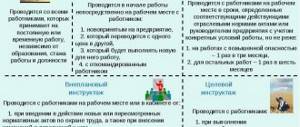Comfortable working conditions in the office
It is wrong to think that office work is conducive for employees. The head of the company is obliged to familiarize employees with existing dangers and risks of injury.
List of comfortable conditions:
- Temperature regime . For the temperature to correspond to the norm: in winter - from 22 to 240 C, and in hot weather - from 23 to 250 C. If the indicator increases or decreases, then working becomes uncomfortable. If the temperature is exceeded, it is allowed to work for no more than 6 hours, and if it drops, it is necessary to take all measures to heat the room.
- Illumination . To ensure impeccable conditions, it is recommended to follow the illumination standard of 300 -500 lux. If a negative view enters the work area from the window, the employee’s work is disrupted. Curtains should be hung on the window. If the latter are absent, then employees can count on a reduced working day and added days to their vacation, otherwise a fine will be imposed on the employer.
- Noise level . According to regulations, noise levels above 80 dB are a violation of occupational safety requirements. As a rule, in this case, employees must be provided with headphones or earplugs.
Creating comfortable conditions for employees to work is an essential aspect, since this is how labor productivity can be achieved.
Normative base
If a specialist spends 12 hours or more a day on a PC, then occupational diseases begin to develop. Organization of the work place is very important.
For the normal activities of office workers, regulatory documents adopted in the Russian Federation apply:
- Each worker is provided with a workplace with a volume of space of at least 19.5 m3 and an area of 6 m2. The employer should not deviate from these indicators in order not to violate the requirements of regulations.
- If you stay indoors for more than two hours at a time, then natural lighting is necessary. Computers can be installed in basements, but this is possible only with the production technology that is installed in the organization. The orientation of the windows is determined by north or northeast. It is necessary to hang curtains or blinds at the openings so that the sun's rays do not interfere with the work process.
- The device of grounding and grounding helps to eliminate the impact of harmful components on employees during the shift. Do not allow the PC to be installed in places where there are power lines and high voltage cables.
- Every day it is necessary to ventilate the room and perform wet cleaning so that dust does not settle on the computer and then become electrified.
- From the rear side, desktops must be installed at a distance of 1.2 m. A distance of at least 2 m must be maintained between monitors.
- The light should fall on the desktop from the left side, this is the predominant direction.
- A distance of 0.6-0.7 m should be maintained from the monitor to the eyes, but it must be taken into account that this distance should not exceed 0.5 m.
- Screens cannot be turned to face each other. This is a clear violation of the rules.
- Chairs should be adjustable to ensure ease of reading and placing information. You need to know that your neck and spine are comfortable.
- A footrest must be provided. The width is 0.3 m, and the depth is no less than 0.4. For height adjustment up to 0.15 m. The surface should not be smooth to prevent feet from slipping.
Regulatory framework of the organization of labor protection
Regulatory documents regulating the field of occupational safety and health in the Russian Federation:
- Labor Code.
- Federal laws No. 69-FZ, 125-FZ, N 123-FZ, N 384-FZ, 426-FZ.
- Resolutions, Orders. Order of the Ministry of Labor of Russia dated December 29, 2014 N 1197, Decree of the Government of the Russian Federation dated December 27, 2010 N 1160, Order of Rostrud dated November 10, 2017 N 655, Decree of the Ministry of Labor of Russia dated 02/08/2000 N 14.
- GOST standards. GOST R 12.0.001-2013, GOST 12.0.002-2014, GOST R 54934-2012/OHSAS 18001:2007, GOST R 12.0.007-2009.
- Sanitary and building standards.
Each industry has its own standard regulations and sample instructions.
Where to start
Office employees begin work after conducting a special assessment of working conditions or after briefing the immediate managers of the companies. Conducting a special assessment is based on carrying out activities in order to identify hazardous factors and harmful effects on the body.
How the working day begins:
- Before you begin performing tasks, you need to inspect the workplace for the presence of grounding, a footrest, adjust the chair for your own comfort, and the absence of exposed wires.
- If any deficiencies are discovered, the supervisor must be informed so that action can be taken. Work should not begin until everything is corrected and compliance is brought to standard levels.
- Employees are required to be informed about all the nuances in the workplace that may interfere with normal work.
Labor protection regulations
The basic occupational safety requirements when working in an office are as follows:
- Compliance with the standards and rules of the fire safety regime at the enterprise according to the operating conditions.
- Ensuring hygienic conditions for lighting, placement of workers on site, determining the number of employees based on area per 1 m2, air humidity and temperature parameters, installation and placement of computer equipment, time spent at the computer.
- Ensuring requirements for the safe use of computers, including the presence of grounding checks, handling of technical devices, the absence of sharp edges and corners on the PC; there should be no glass, and this material can only be replaced with plexiglass.
The provisions are based on sanitary standards and hygienic requirements.
Requirements for production premises and workplaces
General sanitary and technical provisions in relation to production premises are set out in SNiP.
Primary requirements:
- All companies must have places where waste will be dumped;
- premises must be clean and regularly cleaned;
- in boiler rooms, as well as in all similar heated rooms, the formation of condensation on the internal surfaces of the walls is unacceptable;
- floors should be made of materials that can be easily cleaned (for example: tile, asphalt or wood);
- the organization must also have dressing rooms, showers, smoking rooms and other sanitary facilities;
- The company must have a good water supply for various production purposes.
Labor protection requirements before starting work
Before starting to perform tasks, the employee must:
- Conduct an external inspection of the place of his work and put it in proper order.
- Adjust the lighting mode, make sure that the brightness of the light is sufficient, and that there are no reflections or glare on the screen; the luminous flux coming towards it should also not hit the monitor.
- Check whether the equipment is correctly connected to the power supply.
- Use a special cloth to wipe the computer monitor and surge protector so that static electricity does not accumulate during operation.
- Check and adjust the installation of the computer chair, position the monitor at the desired angle in a given plane. There should be no tension in the body and the eyes should not get tired when performing management tasks.
If you discover any shortcomings and if you are not sure that everything during preparation was done correctly, then you must inform your manager or eliminate the shortcomings yourself, only after starting work.
Safety requirements during operation
During the execution of a production task, the PC user is obliged to:
- Perform only the work that was assigned to him by the manager, as well as for which he was instructed.
- In the process of performing tasks, it is necessary to know and comply with the norms prescribed by sanitary rules and regulations.
- When entering information, select the optimal physiological mode, that is, set the desired brightness on a white background.
- It is necessary to take breaks during work, that is, perform industrial gymnastics or know a set of exercises specially designed to relieve the muscles of the neck, shoulder joints and head.
- The distance from the monitor to the operator’s eyes should be from 0.5 to 0.6 m.
Computer safety poster
Several requirements for what not to do when performing tasks:
- If the power is turned on, do not touch the back panel of the system unit to avoid injury from static electricity or insulation breakdowns.
- When the power is on, do not switch connectors or cables.
- There should be no different papers or other objects on the top panels.
- Do not allow moisture to get on the system unit or monitor, keyboard, photocopier, printer or disk drive to avoid electric shock.
- If the equipment has been outside for a long time at sub-zero temperatures, it is not allowed to be turned on immediately. It is necessary to let the equipment stand at home for six hours.
- A PC user cannot repair a PC on his own, as he is not certified to perform this work, and this can lead to unpredictable consequences.
If the listed regulations are followed, the safety of technological processes will be ensured.
Animated film on occupational safety and health in the office:
Fire safety requirements
They are enshrined in several regulations:
- ;
- ;
- ;
- .
Each document contains many rules regulating what materials furniture should be made of, what materials should be used for floors and walls, where to place the kitchen, and where there should be an emergency exit. If you do everything “by eye”, there is a risk of running into serious fines.
Fire safety requirements depend on:
- office area and its position in the building;
- number of employees;
- availability of warehouse and production facilities located near the office;
- number of electrical appliances.
To organize office workspaces
corresponded, it is important to pay attention to:
- Decoration Materials. To select them, you need to take into account the requirements of SNiP, which regulate the use of certain materials in different types of premises. For example, only non-slip coatings can be used in corridors, steps and landings. Suspended ceilings in the office will have to be installed on a metal frame, and for “wet” rooms only slatted options are suitable.
- Electrical equipment. Each office has kettles, a refrigerator, a microwave oven and other electrical appliances. In accordance with this, they can be used if they are equipped with thermal insulation protection and stand on a stand made of non-combustible materials.
- Availability of fire extinguishing systems and means. The room should be equipped with tools and materials that will help in the initial stages of a fire: fire extinguishers, fire hydrants, fire-resistant fabrics. All of them should be in easily accessible places.
- Fire alarm systems. The office must be equipped with an automatic fire alarm system. If there are more than ten people on staff, a warning and evacuation control system should be installed. If more than 50, the notification must be voice. All these requirements are enshrined in.
- Emergency exits. Doors to the staircase should open outward. The number of emergency exits depends on the area and size of the team: if no more than fifteen people work per 300 m², there can be only one.
- Evacuation routes. The plan should be as detailed as possible; it should indicate escape routes to stairwells or exits to the street.
There is no point in starting repairs before you are familiar with the requirements. If all these points are not taken into account at the planning and arrangement stage, inspectors may not only issue a fine, but also suspend work until the violations are eliminated.
Monitoring compliance with requirements and penalties
The implementation of norms and rules is monitored by State Fire Supervision. Violating employers face administrative liability—a fine.
For violation of fire safety requirements, resulting in a fire, serious harm to health or death, the State Fire Supervision authorities may
Requirements in emergency situations
If an emergency situation occurs at the workplace, an employee of an office company must fulfill several requirements to prevent its development:
- If for any reason the wires through which power is supplied to the computer are broken, or a fire occurs, then this factor must be reported to the immediate supervisor, the person on duty, and the PC must be immediately de-energized.
- If a person finds himself in a high voltage zone, then it is necessary to free him, that is, turn off the electricity and begin providing first aid. Everyone should be able to provide the latter.
- If there is a failure in working with the PC, you need to report the incident to the duty service responsible for repairs.
- If there is pain in the eyes, pain in the pupils, or the state of health has deteriorated sharply, then it is necessary to inform the manager, leave the workplace, and go to the first aid station so that first aid can be provided.
- When electrical equipment accidentally catches fire, it is necessary to de-energize the system, call the fire service and begin to extinguish the fire with carbon dioxide and powder. By decision of the manager, it is necessary to evacuate to a previously established place.
Every employee must know the sequence of activities to ensure that no emergency situation has developed.
On-the-job training in the office
Work in the office should begin with training.
Poster on labor safety training
Table 1. Types of occupational safety briefings
| Type of instruction | Description |
| Introductory | It is carried out before an employee is hired to work in an office company. The person is not yet employed and does not know the nuances of the work process, so you first need to talk to him, ask a few questions, and then sign in the journal. It is conducted by an occupational safety specialist who has a certification noted in the certificates. |
| Primary | Before starting to perform production tasks, you need to make sure that the employee has knowledge of all the nuances of working in the office. To do this, the manager conducts an initial briefing, which stipulates all the nuances of work at a given place, including familiarization with the special assessment card for working conditions. |
| Repeated | As time passes, the employee begins to forget about his own safety and, in order to remind him of basic measures, regulations provide for periodic conversations, that is, reminders about safety. This type of instruction is provided for this purpose. |
| Unscheduled | It is carried out if an emergency situation occurs in an office company. When replacing or upgrading equipment, if new occupational safety instructions have been introduced or new norms or rules have been regulated, if an accident has occurred or circumstances have arisen in which there was a threat to human life, then an unscheduled meeting is held. Employees are informed of the requirements prescribed by regulatory acts on occupational safety. |
| Target | This type of instruction is regulated in cases where an employee is sent to engage in another type of activity. For example, for cleaning the area or watering the lawn. It is not necessary to conduct certification in these areas, but it is necessary to provide instructions. |
All types of briefings are regulated by state standards.
Watch the safety briefing for office workers in this video:
List of documents on occupational safety for office workers, responsibility for their absence
List of documents that an employer must have:
- Inner order rules.
- Employment contract.
- Regulations on OT.
- Order on persons responsible for occupational safety.
- Job descriptions.
- Induction program.
- Initial training program.
- Order on persons exempted from initial instruction.
- Briefing logs.
- Results of the conducted SOUT.
All documentation must be stored in accordance with Order of the Ministry of Culture No. 558 within the specified storage periods.
If violations or errors are detected during control by the labor inspectorate, the employer bears responsibility. Code of the Russian Federation in Part 1 of Art. 5.27.1 on administrative offenses contains the following types of liability:
- fine of officials;
- fine for legal entities;
- suspension of work.
It doesn’t matter whether a company is large or small, commercial or not, the norms and rules of labor protection are the same for everyone. Therefore, the employer is obliged to take care of its employees and provide them with normal working conditions.









